Spectrum Accessories/spare parts for light ribbon-/hose/-strip




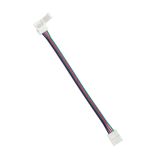
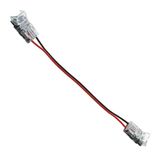

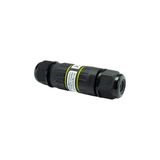
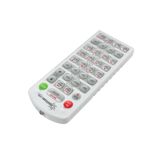

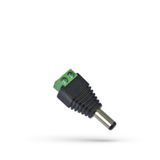
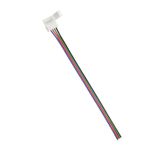
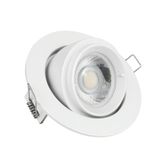
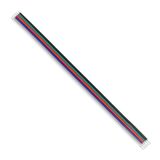
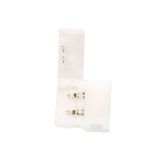
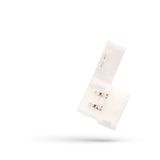
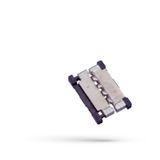







spectrum accessories for led strips families and materials
This category covers the parts that turn reels into finished lines: connectors, profiles, lenses, glands, tails, and service pieces. Housings come in anodized 6063-T5 aluminum with PC/PMMA diffusers; indoor sets are IP20, outdoor kits reach IP65–IP67 with gaskets and sealed tails. Plastics meet glow-wire 650/750/850 °C where ceiling voids demand it. Adhesives are thermally conductive and rated for −20…+80 °C so Tc on the LED track stays under 85 °C when bonded to metal.
spectrum led strip connectors electrical interfaces
Options span solderless board-to-wire clips, in-line joiners, L/T/X corners, and polarity-keyed mid-feed blocks. Pitch support: 5/8/10/12 mm for single-CCT, 10/12 mm for CCT-tunable, and 12–14 mm for RGB/W. Current ratings sit 3–6 A per contact; tinned copper forks avoid pad lift on flexible PCBs. For IP65/IP67 ribbons, split-shell clamps with gel inserts maintain the seal. Low-profile plugs fit through 8–10 mm profile slots; locking tabs keep tension off copper pads during maintenance.
spectrum led power supplies driver portfolio
Constant-voltage rails in 12/24/48 V DC cover short coves to long, low-loss runs. Indoor drivers: IP20, PF ≥ 0.90 (≥10 W), THD ≤ 15 %, ripple < 5 %. Outdoor: IP67, potted, −25…+50 °C with 2–4 kV surge immunity. Dimming styles include PWM, 1–10 V, DALI-2 DT6 for single-channel and DT8 for tunable white, plus DMX/RDM for show control. Inrush is documented per model—size MCB channels accordingly. All drivers reference EN/IEC 61347-1/-2-13 and IEC 62384; EMC to EN 55015/EN 61547.
spectrum end caps and profiles mechanical finishes
Recessed, surface, corner, and pendant bodies ship in 1/2/3 m lengths with opal or micro-prismatic lenses. Tall chambers improve diffusion for high-density strips; shallow channels maximise punch for wall grazing. End-caps use screw-through compression and silicone washers; blind caps include drain pinholes for exterior soffits. UGR-oriented optics (micro-prismatic) keep desk zones comfortable; batwing films are available for wide desk uniformity. IK07/IK08 covers ride out late-stage site knocks.
Controls, repeaters, and data hygiene
PWM repeaters extend run length without colour shift; line amplifiers keep DT8 tracks in step across long corridors. For camera-heavy spaces, select high-frequency PWM to hold PstLM ≤ 1.0 and SVM ≤ 0.4. Shield terminations use 360° braid clamps at entry plates so control buses (DALI/0–10 V/DMX) remain quiet.
Wiring kits and power injection
Pre-made tails (0.5–5 m) use fine-strand 2×/3×/5× conductors with printed metre marks. Injection tees land every 2–5 m depending on gauge and load to keep voltage drop < 3 %. Through-wire hardware preserves DALI lines across profile joints. For IP67, gel-filled couplers and heat-shrink boots secure strain and seal the exit.
Product standards that actually matter
- LED modules: EN 62031 with LM-80/TM-21 source data on pro strips.
- Photobiological safety: EN 62471 RG0/RG1 typical.
- Glands and ferrules: EN 62444—match to jacket OD or IP will fall
- Luminaires built from these parts follow EN/IEC 60598-1; keep labels updated when profiles become finished fixtures.
Series snapshots by job type
- Slim recessed: narrow flange, opal lens, for furniture reveals.
- Wide surface: deep chamber, micro-prism, UGR-minded office rows.
- Corner grazers: 30/45° bodies for wall texture.
- Pendant lines: edge-lit trays for continuous ribbons above benches.
- Outdoor edge: sealed lids, vented caps, UV-stable lenses for façades.
In the catalog you’ll also find angled and flexible bases that align with curved counters and columns.
Service and spares
Common wear items—diffusers, lenses, gaskets, latch sets, and tails—are stocked as spectrum spare parts for light ribbon hose so a late crack or scratch doesn’t hold up handover. Order 2–3 % overage on diffusers where traffic is heavy.
Practical picks for installers
When drawings call up spectrum led strip mounting kits, specify profile type, lens, end-caps, clips, feed location, and cable exit direction in one line. Use thermally conductive tape on aluminum only; gypsum and raw wood need carrier bars. Keep bend radii ≥ 30–50 mm unless a side-bend ribbon is specified.
Quick selection logic
- Voltage & run length: 48 V for long coves; 24 V general; 12 V for short, tight bends.
- Optic: opal for direct view, micro-prism for UGR control, clear for maximum punch.
- Dimming: DT6 single CCT, DT8 tunable white, DMX for scenes; note PWM frequency.
- Environment: IP20 interiors; IP65/67 for soffits and wash zones; choose UV-stable lenses outdoors.
- Colour policy: SDCM ≤ 3 across phases; CRI 90 with R9>50 where materials matter.
A small logistics note: items grouped on schedules as spectrum lighting installation accessories ship kitted by zone—profiles, lenses, caps, clips, feeds—so trays land ready to build.